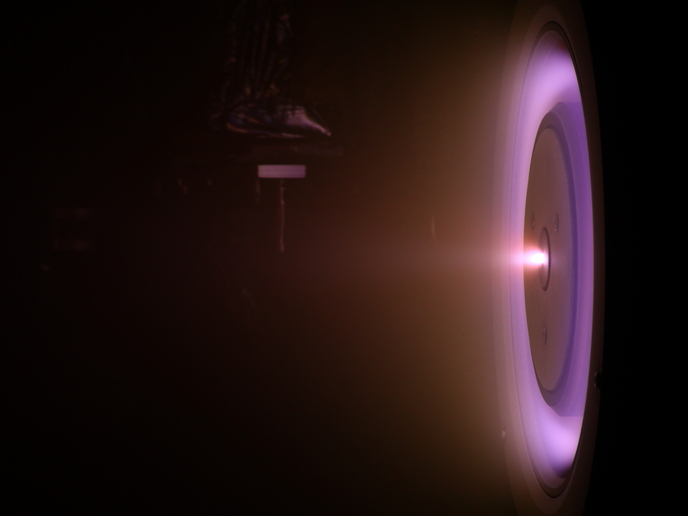New orbits are on the horizon with air-breathing engines
Electric propulsion (EP) thrusters are the future for scientific and commercial satellites. But propulsion is a limiting factor: as soon as the propellant used to create thrust is depleted, the satellite can no longer manoeuvre and reaches the end of its operational lifetime. The EU funded AETHER(opens in new window) project addresses this issue by using residual gases of the upper atmosphere instead of on-board propellant, allowing satellites in very low earth orbit (VLEO) to remain in service for longer and become more cost-effective.
New opportunities in VLEO
Thousands of satellites fill the sky above our heads, particularly in low earth orbit. VLEO is enticing, as it offers enhanced resolution for earth observation and increased speed in telecommunications. But satellites at this altitude – roughly 200 km from the Earth’s surface – are difficult to maintain. Due to the thin but not insignificant atmosphere, satellites in VLEO must constantly counteract the drag of the surrounding air. This rapidly depletes a satellite’s propellant. Using the air itself as a propellant is a game-changer, as it is in inexhaustible supply. While VLEO represents the most market-ready operative scenario for air-breathing EP engines, interplanetary exploration is also a suitable application, as an atmosphere-breathing EP thruster can be used near a celestial body. Mars, as well as Saturn’s moon Titan, are both good candidates for this.
The RAM-EP thruster
Europe is in the vanguard for developing this technology. In 2017, aerospace leader SITAEL(opens in new window) produced and tested on ground the RAM-EP – the world’s first air-breathing thruster. According to Stefan Gregucci, head of propulsion at SITAEL: “The aim of the AETHER project was to pave the way for VLEO satellites by concentrating on the air-breathing propulsion system optimisation. The RAM-EP system has been patented within AETHER, thus strengthening SITAEL’s position and competitiveness in this very promising segment of the market.” While the concept of an air-breathing thruster is straightforward, creating such a system brings many challenges. To produce thrust, the system must collect the incoming air flow, ionise it, and accelerate the produced ions to a speed considerably higher than the orbital velocity. In the harsh environment of VLEO altitudes, characterised by strong atomic oxygen corrosion, materials are put under a great deal of stress. This aspect adds to the intrinsic complexities of the RAM-EP functional design. Matteo Ciolini, propulsion engineer at SITAEL, states: “The aim for improved ionisation capabilities led to critical thermal and electrical design constraints, forcing us to explore new ceramic materials, unconventional shapes of the intake and also advanced manufacturing processes.”
Replicating the environment
AETHER built on and improved the RAM-EP design in multiple ways. The team designed two novel acceleration stages and tested one with atmospheric propellant. To mitigate the effects of the environment, engineers designed and tested a compact radio frequency cathode. Based on numerical flow simulations, the intake thruster was significantly redesigned. Finally, AETHER employed a particle flow generator to simulate the atmospheric composition and velocity a spacecraft faces in VLEO. The next steps in developing this disruptive technology involve testing the improvements made during the course of the project. The ultimate goal will be designing a spacecraft which incorporates the RAM-EP system. Air-breathing EP engines in VLEO satellites are still on the horizon, but AETHER has advanced the technological readiness level (TRL) of this exciting innovation in space propulsion.



